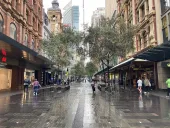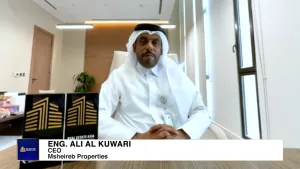
How are retail rents faring in Tokyo’s regional cities?
Average rents increased 9% to JPY26,350 per tsubo in H1 2021.
All markets in Tokyo’s regional cities recorded retail rental growth. According to Savills, average regional 1F rents increased 4.5% HoH and 9.0% YoY to JPY26,350 per tsubo. Meanwhile, non-1F rents have experienced a slight dip of 0.8% HoH, reducing the annual growth to 0.7%.
“Here, performances varied significantly from city to city, with some areas like Osaka’s Shinsaibashi posting notable gains, but others like Fukuoka seeing corrections over the year. However, like Tokyo, rents are generally inflated by the increase in listings located in prime locations that were previously unavailable, and observations of rental growth should not be taken at face value,” Savills adds.
Here’s more from Savills:
In Osaka, Shinsaibashi has once again seen notable increases in both 1F and non-1F asking rents. Specifically, 1F rents increased 4.3% HoH and 15.8% YoY to JPY33,800 per tsubo, maintaining its upward trend. Meanwhile, non-1F rents have increased 7.9% HoH and 11.9% YoY to JPY15,100 per tsubo. At the same time, the submarket still faces high levels of vacancy, which has contributed to these increases in average asking rents.
Within regional cities, Shinsaibashi bears the most resemblance to the prime retail districts in Tokyo. The submarket is characterised by high levels of footfall and foreign tourists, and contains a mix of high-end goods, drug stores, apparel, and F&B outlets. However, with the exception of the Mido-suji area that has been supported by the performance of its luxury stores, other areas are suffering from the plummet in tourists, and even new developments like Parco have lured only a limited number of customers to the area. In August, Uniqlo decided to close its iconic Shinsaibashi outlet, further damaging the image of the district. Even with the speedy vaccine rollout, recovery appears distant for the submarket considering it was a major beneficiary of inbound tourism.
Rents have seen a slight correction in Sakae, Nagoya, with average all-floor rents declining 2.9% HoH to JPY16,800 per tsubo, although still remaining 1.2% higher over the year. The slight weakening in rents was primarily present in non-1F units, whereas 1F units remained firm. Nagoya’s position as a strong economic hub that was originally not as dependent on inbound tourism as Tokyo or Osaka is a key reason that Sakae has been relatively insulated from the pandemic. However, its F&B industry along main streets have still been disproportionately affected, and such businesses will take longer to recover. Meanwhile, ongoing developments in the area like the new Chunichi Building have been going smoothly. Another project on the Sakae Hiroba plans to house Daimaru Matsuzakaya Department Store on its lower floors and looks set to help boost consumer demand in the area upon completion. Moreover, with Aeon Mall Nagoya Noritake Garden opening close to Nagoya station, and Iias Kasugai opening in Kasugai City at the end of October, large shopping malls appear to have maintained their popularity in both urban and suburban areas.
Average all-floor rents in Fukuoka’s Tenjin saw a correction of 2.1% HoH and 4.2% YoY to JPY19,000 per tsubo. Tenjin’s retail market was supported by the demand brought in by inbound tourists, and restrictions that came with the pandemic have unquestionably damped its prospects. This rings especially true for its F&B and apparel industries that are still facing challenging times. For instance, the site where Abercrombie & Fitch’s flagship store once stood remains vacant. However, unlike many of its counterparts, vacancies in Tenjin have somewhat decreased over the year – a sign of some recovery in the market. Indeed, new store openings are slow, but gently making progress in the submarket. Redevelopment tailwinds like the Tenjin Big Bang Project are also underway, and will be one of the cornerstones of the market’s vitality in the future.
Looking at Sendai, Miyagi, average 1F rents have increased by 3.4% HoH to JPY24,600 per tsubo. Non-1F rents have, on the contrary, trended downward, shrinking 3.3% HoH to JPY14,700 per tsubo. While Sendai’s low dependence on inbound tourism has shielded it from a significant negative effect of the pandemic, its F&B industry has not been spared. Compared to the previous half-year, Sendai has seen a notable increase in the number of vacancies, especially in the Kokubuncho area, which has a high concentration of F&B businesses. Indeed, the decreased footfall in these areas has taken its toll on the industry, and prospects for the submarket are looking grim, especially for the shopping streets. Nonetheless, there are some positives, especially around Sendai station, where the Yodobashi Sendai Dai-ichi Building project is underway. Ongoing redevelopment should contribute to the submarket’s long-term potential.
Up in the north, average all-floor rents in Sapporo have inched up 2.4% HoH to JPY13,000, translating to a yearly increment of 10.2%. However, the narrative of Sapporo is similar to that of other regional cities – actual rents have stayed flat, and any rental growth is more likely due to the increase in listings. In fact, vacancies in Sapporo have seen a large jump from the previous half-year, and many closures have been observed for non-1F units. Indeed, the multiple state of emergencies and restrictions have hurt the sales of consumer goods and services all around, and even the peak tourism season in summer should not be enough to compensate.
It should be noted that the damage done to Sapporo was not evenly spread. Specifically, shops closer to Sapporo station and around the Odori area are faring much better than Susukino, which has a high concentration of restaurants and entertainment establishments. In fact, Susukino is the root cause of the spike in vacant units, which has overall more than tripled from the previous half-year, and immediate prospects for the area are dim even with the end of the state of emergency. Nonetheless, there is hope going forward with the recent announcement of the Sapporo Susukino Ekimae Complex Development Project to be built on the former Susukino Lafiler site, introducing an 18F mixed-use facility comprising retail and hotel in 2023. The potential that this development has to rejuvenate the area should be a big win for Susukino and its surroundings.



















 Advertise
Advertise





